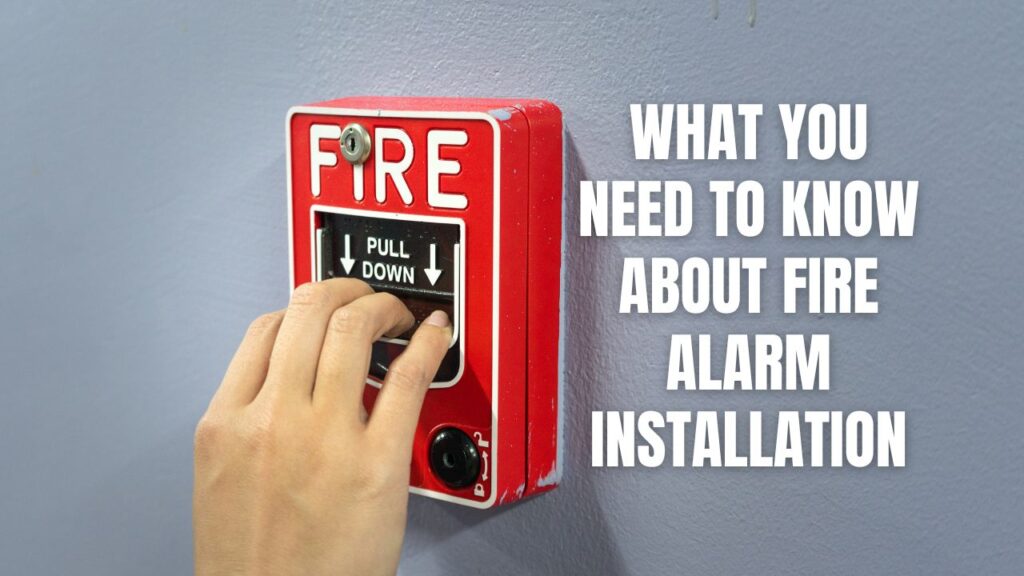Fire safety is a paramount concern for every homeowner, and the installation of a reliable fire alarm system is a crucial step in ensuring the safety of your home and family. When it comes to installing a fire alarm system, one of the key decisions you’ll face is whether to embark on a DIY journey or seek the expertise of a professional. In this comprehensive guide, we’ll explore the ins and outs of fire alarm installation, weighing the pros and cons of both DIY and professional approaches.
Understanding the Basics
Before delving into the DIY vs. Professional debate, it’s crucial to have a solid understanding of the basics of fire alarm systems. A fire alarm system typically consists of detectors, alarms, control panels, and sometimes, monitoring services. These components work in tandem to detect and alert occupants about the presence of fire or smoke, providing valuable time for evacuation.

DIY Fire Alarm Installation
Advocates of the DIY approach argue that it can save both time and money. With advancements in technology, many user-friendly fire alarm systems are available off the shelf, making it tempting for individuals to take matters into their own hands.
Pros of DIY Fire Alarm Installation:
- Cost Savings: DIY kits are often more budget-friendly than hiring professionals, making it an attractive option for those on a tight budget.
- Flexibility: DIY systems allow for customization based on individual needs and preferences.
- Immediate Installation: No need to wait for appointments – you can start the installation right away.
Cons of DIY Fire Alarm Installation:
- Technical Challenges: Setting up a fire alarm system involves technical know-how, and individuals without a background in electronics may find it challenging.
- Limited Expertise: DIY installers might lack the in-depth knowledge required to optimize the system for specific building layouts and potential fire hazards.
- Code Compliance: Ensuring compliance with local fire safety codes can be tricky without professional guidance.
Installation Steps: DIY Perspective
For those opting for a DIY approach, here is a step-by-step guide to smoke detector installation:
| Step | Instructions |
|---|---|
| 1 | Identify suitable locations for smoke detectors in your home. |
| 2 | Use a marking tool to note screw holes for mounting. |
| 3 | Install the alarms at least 12 inches from the ceiling. |
| 4 | Follow manufacturer’s instructions for wiring and power. |
| 5 | Test your smoke alarms to ensure functionality. |
Professional Fire Alarm Installation
On the other side of the spectrum, hiring professionals for fire alarm installation provides a sense of security and expertise that many find reassuring. Certified technicians bring experience and knowledge to the table, ensuring the system is installed correctly and complies with all relevant regulations.
Pros of Professional Fire Alarm Installation:
- Expertise: Trained professionals possess the knowledge to design and install systems tailored to the unique needs of a space.
- Code Compliance: Professionals are well-versed in local fire safety codes, ensuring your system meets all necessary regulations.
- Reliability: A professionally installed system is more likely to function seamlessly, minimizing the risk of false alarms or system failures.
Cons of Professional Fire Alarm Installation:
- Cost: Professional installation typically comes with a higher upfront cost compared to a DIY approach.
- Scheduling: Booking appointments and waiting for professionals to install the system can take time, which might be inconvenient for those seeking immediate solutions.
- Limited Customization: While professionals ensure compliance, the level of customization may be limited compared to a DIY setup.
Installation Steps: Professional Perspective
Professionals follow a more intricate process to guarantee a safe and effective fire alarm system installation:
| Step | Instructions |
|---|---|
| 1 | Conduct a thorough assessment of the property. |
| 2 | Determine optimal alarm locations based on the assessment. |
| 3 | Utilize hardwired connections for a reliable power source. |
| 4 | Integrate smoke alarms into existing home security systems. |
| 5 | Test the entire system to ensure seamless functionality. |
Making the Decision
Deciding between DIY and professional fire alarm installation depends on various factors, including budget, technical expertise, and the specific needs of the space. To assist in the decision-making process, let’s break down the key considerations:
Budget:
- DIY: Ideal for those on a tight budget, looking to save on upfront costs.
- Professional: A higher initial investment, but the long-term reliability may justify the expense.
Technical Expertise:
- DIY: Suitable for individuals comfortable with technical installations and troubleshooting.
- Professional: Recommended for those lacking technical expertise or facing complex installation scenarios.
Timeline:
- DIY: Immediate installation, perfect for those in a hurry.
- Professional: Requires scheduling, but ensures a thorough and compliant installation.
Customization:
- DIY: Offers a high level of customization to meet specific needs.
- Professional: While compliant, may have limitations in customization.
Conclusion
In the grand scheme of fire safety, the decision between DIY and professional fire alarm installation is not one-size-fits-all. Both approaches have their merits and drawbacks, and the choice ultimately depends on individual circumstances. If you value customization, have technical know-how, and are working with a limited budget, DIY might be the way to go. On the other hand, if you prioritize expertise, compliance, and long-term reliability, investing in professional installation could be a wise decision.
Remember, regardless of the chosen path, regular maintenance and testing are crucial to ensuring the continued effectiveness of your fire alarm system. Whether you’re a DIY enthusiast or prefer the peace of mind that professionals bring, taking proactive steps to protect against the threat of fire is a responsibility we all share.












